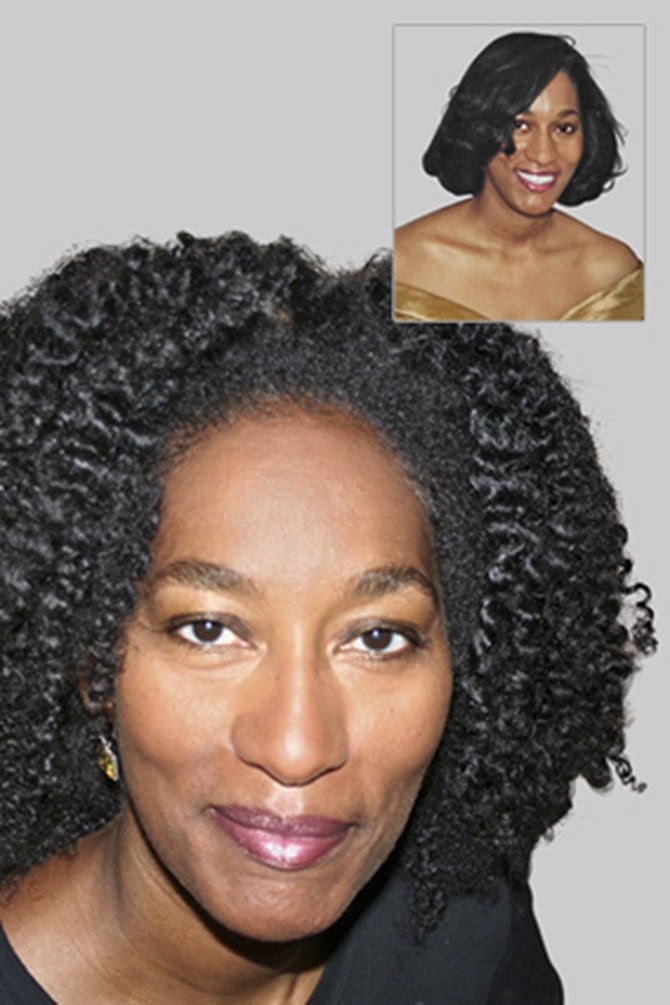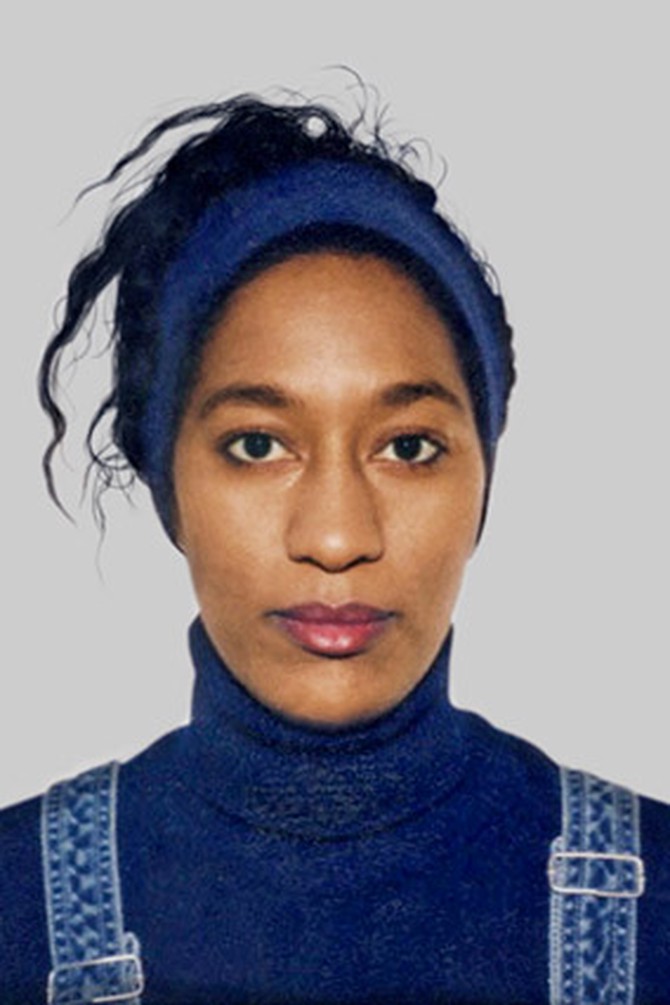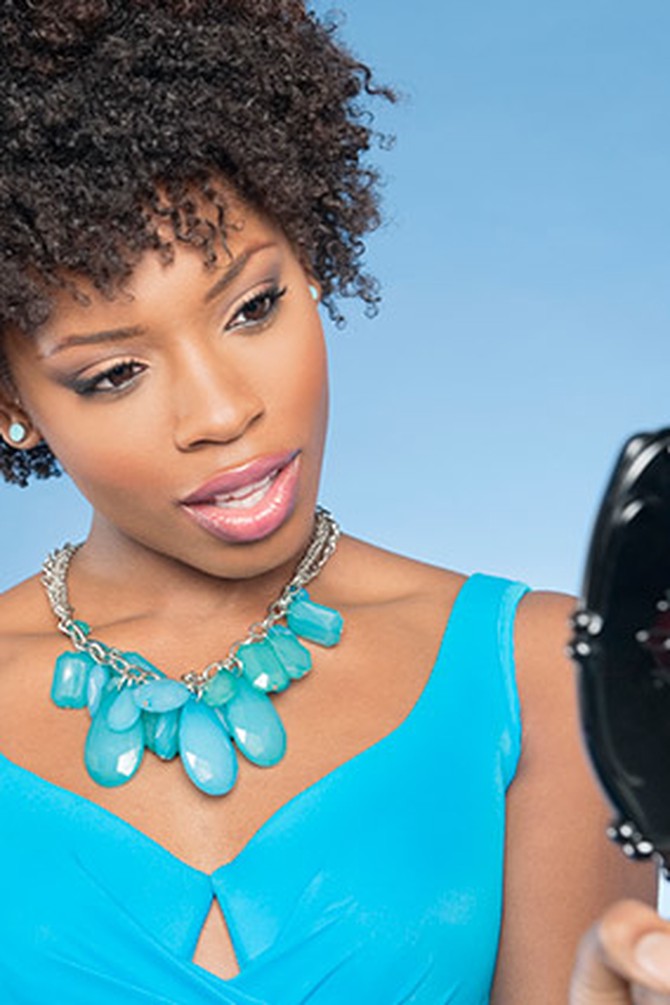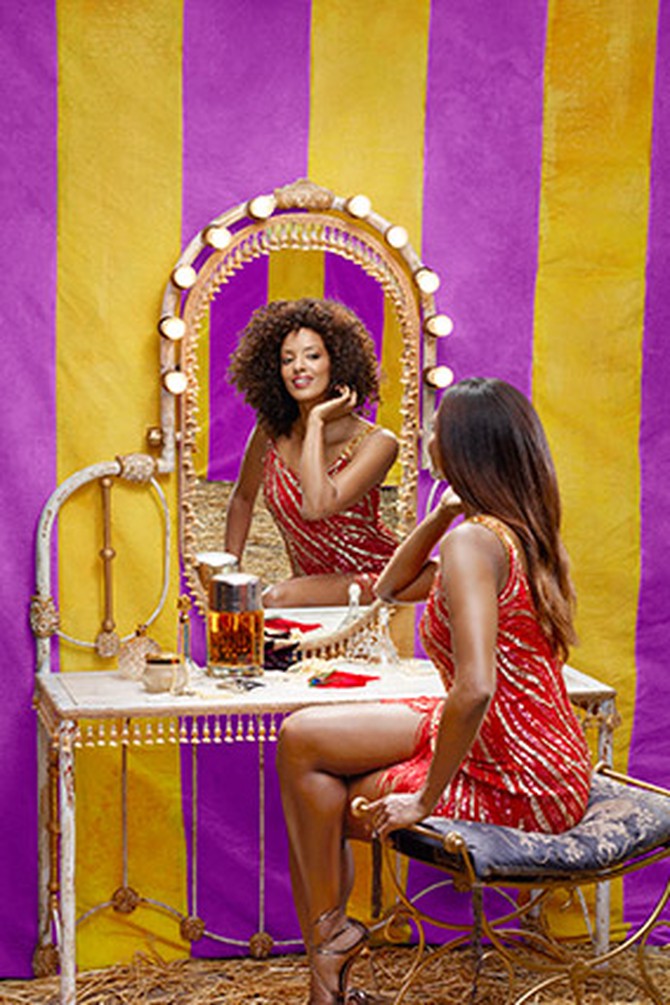Everything You Need to Know About Quitting Relaxing
For Bridgett Davis, going natural meant losing a lifelong hairstyle–and finding her true self.

Photo: Courtesy of Bridgett Davis
She Stopped Relaxing and She Was Fine!
I noticed it on day one: I was the only woman in the room with relaxed hair. While I should've been thinking about the thrilling journey I'd just embarked upon—I was directing my first film, which I'd also written—I couldn't stop looking at the female actors and crew, with their long dreads, chic Afros and springy twists. How was it that I—the writer of a film about a woman learning to reveal her true self, the director who'd purposely cast women with natural curls—was too afraid to embrace my own real hair?
Well, for starters, maintaining it was a skill I'd never learned. My mother began relaxing my hair when I was 8. I have bruising memories of sitting for hours atop telephone books, roasting beneath a hooded dryer, my hair in rollers. The dryer's heat was uncomfortable; the roller pins on my scalp torturous. The more I squirmed, the more time I added to the ordeal.
Still, as a young woman I'd kept relaxing out of habit—and perhaps, I now suspected, out of fear. I didn't know how to have natural hair. I was afraid of the work involved. I wasn't sure I could control it. And I had no idea whether I'd like the way it looked. But what I knew I didn't like was the fact that my hair and I were acquaintances, not friends: Our interactions were largely mediated by a hairstylist. My hair felt inauthentic. That thought gnawed at me. By the time we wrapped production, I'd vowed to go relaxer-free.
There were two things I didn't consider: First, it takes a long time for relaxed hair to revert to its natural texture, and during that process it looks decidedly uneven. Second, when you have a movie coming out, you sometimes have to get your picture taken. Oops.
In photos from that time, my hair looks...transitional. But I was in transition. I was changing from someone inspired by women around her to someone who might possibly inspire others: At a screening of my film, an audience member came up to me and said, "Thanks for showcasing black women with natural hair—and by the way, I love yours."
Well, for starters, maintaining it was a skill I'd never learned. My mother began relaxing my hair when I was 8. I have bruising memories of sitting for hours atop telephone books, roasting beneath a hooded dryer, my hair in rollers. The dryer's heat was uncomfortable; the roller pins on my scalp torturous. The more I squirmed, the more time I added to the ordeal.
Still, as a young woman I'd kept relaxing out of habit—and perhaps, I now suspected, out of fear. I didn't know how to have natural hair. I was afraid of the work involved. I wasn't sure I could control it. And I had no idea whether I'd like the way it looked. But what I knew I didn't like was the fact that my hair and I were acquaintances, not friends: Our interactions were largely mediated by a hairstylist. My hair felt inauthentic. That thought gnawed at me. By the time we wrapped production, I'd vowed to go relaxer-free.
There were two things I didn't consider: First, it takes a long time for relaxed hair to revert to its natural texture, and during that process it looks decidedly uneven. Second, when you have a movie coming out, you sometimes have to get your picture taken. Oops.
In photos from that time, my hair looks...transitional. But I was in transition. I was changing from someone inspired by women around her to someone who might possibly inspire others: At a screening of my film, an audience member came up to me and said, "Thanks for showcasing black women with natural hair—and by the way, I love yours."

Photo: Courtesy of Bridgett Davis
Transition Ammunition
Three tricks that helped Bridgett Davis win her battle against two-texture hair:
1. Find a great hair gel.
"During the worst of the two-texture period, a strong gel was incredibly helpful. I would comb it through and then slick my hair back into a ponytail or bun. My favorite was Aveda Brilliant Retexturing Gel." ($18)
2. Stock up on headbands.
"Wide, stretchy cotton headbands—often in bright colors and bold prints—were a godsend. They concealed and controlled the new growth. My hair was still a little wild in back, but with the headband, it was a controlled wildness."
3. Condition early and often.
"Regular deep-conditioning treatments made my hair so much softer and easier to manage. I often made the conditioner myself—two parts coconut oil to one part honey."
1. Find a great hair gel.
"During the worst of the two-texture period, a strong gel was incredibly helpful. I would comb it through and then slick my hair back into a ponytail or bun. My favorite was Aveda Brilliant Retexturing Gel." ($18)
2. Stock up on headbands.
"Wide, stretchy cotton headbands—often in bright colors and bold prints—were a godsend. They concealed and controlled the new growth. My hair was still a little wild in back, but with the headband, it was a controlled wildness."
3. Condition early and often.
"Regular deep-conditioning treatments made my hair so much softer and easier to manage. I often made the conditioner myself—two parts coconut oil to one part honey."

Photo: Thinkstock
Taking the Plunge
When you decide to stop relaxing your hair, the first question to ask yourself is: Do I want a supershort cut (in transitioning parlance, a Teeny Weeny Afro, or TWA)?
YES? Then it's time for the Big Chop (BC). Many women cut off all their processed hair in one fell swoop to avoid dealing with two-texture hair. After the BC, some keep their TWA; others grow their hair out.
NO? If you want to keep your length, it will take six months to several years to grow out your processed hair, depending on how long it is. (Bridgett Davis clocks her complete transition at four years.)
Month 3: You have about an inch of new growth. For uniform texture, use the comb attachment on your hair dryer to smooth your roots, says hairstylist Anthony Dickey, owner of Hair Rules Salon in New York City. Apply a heat-protecting product, and be gentle where your natural hair meets your relaxed hair, because it's prone to breakage. Trim an inch of relaxed hair every six to eight weeks.
Month 6: With two to three inches of new growth, you can now see your natural curl pattern. To achieve one-texture hair, hairstylist Tippi Shorter recommends using roller or rod sets to get an allover curly look. Go to a salon every two weeks or curl at home and use a low-heat bonnet dryer.
Month 9: Your natural hair is long enough to try braided and twisted styles. To keep your hair supple and shiny, incorporate your styling routine into your shower routine, working olive oil through your hair when it's soaking wet, then combing in styling cream or conditioner with your fingers.
Month 12: If you're happy with a bob, you're likely at the end of your journey. Trim away the last inch or two of relaxed hair. Fabulous!
YES? Then it's time for the Big Chop (BC). Many women cut off all their processed hair in one fell swoop to avoid dealing with two-texture hair. After the BC, some keep their TWA; others grow their hair out.
NO? If you want to keep your length, it will take six months to several years to grow out your processed hair, depending on how long it is. (Bridgett Davis clocks her complete transition at four years.)
Here's a Timeline of What You Can Expect:
Month 3: You have about an inch of new growth. For uniform texture, use the comb attachment on your hair dryer to smooth your roots, says hairstylist Anthony Dickey, owner of Hair Rules Salon in New York City. Apply a heat-protecting product, and be gentle where your natural hair meets your relaxed hair, because it's prone to breakage. Trim an inch of relaxed hair every six to eight weeks.
Month 6: With two to three inches of new growth, you can now see your natural curl pattern. To achieve one-texture hair, hairstylist Tippi Shorter recommends using roller or rod sets to get an allover curly look. Go to a salon every two weeks or curl at home and use a low-heat bonnet dryer.
Month 9: Your natural hair is long enough to try braided and twisted styles. To keep your hair supple and shiny, incorporate your styling routine into your shower routine, working olive oil through your hair when it's soaking wet, then combing in styling cream or conditioner with your fingers.
Month 12: If you're happy with a bob, you're likely at the end of your journey. Trim away the last inch or two of relaxed hair. Fabulous!

Photo: Hugh Kretschmer
True to Form
Sales of relaxers—the chemical treatments African American women have used for 100 years to straighten their hair—plummeted almost 40 percent from 2007 to 2012, according to market research firm mintel. (they're predicting a full 50 percent drop by 2017.) and women aren't just quietly ditching; a YouTube search for "transitioning to natural" turns up 100,000 videos of the converted documenting their journey back to their original texture. "the decision to stop relaxing your hair is overwhelming," says hairstylist Edris Nichols, owner of the Edris Salon in New York City, who's helped clients grapple with the choice. "but going natural can be like coming out—a positive and life-changing affirmation."
Next: 3 gorgeous ways to style natural hair
Next: 3 gorgeous ways to style natural hair
From the September 2013 issue of O, The Oprah Magazine

